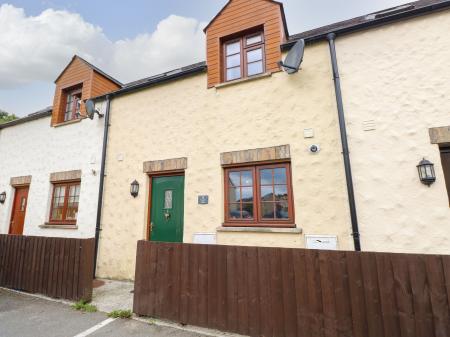
Other legends say that a silver harp is hidden in the hill, or that the hill is inhabited by faeries. More prosaically, we know that the present castle is built on the ruins of an Iron Age hill fort. Medieval manuscripts mention a castle here as early as 1073, but the present building is a likely product of the late 13th century.
The castle was probably built by Gruffudd ap Madog (d. 1269), ruler of north Powys. Gruffudd allied with Llewelyn ap Gruffudd in his squabble with his brothers for control of Powys. In 1277 the castle was besieged and destroyed by Henry de Lacy, Earl of Lincoln, on behalf of Edward I.
The Welsh defenders burned the castle so that the English would not be able to use it, and retreated before de Lacy's troops arrived. Sometime before 1282 Dafydd ap Gruffudd, Llewelyn's brother, occupied Dinas Bran once again and the English were forced to send another force to retake it. Edward then granted Dinas Bran to the Earl of Surrey.

The castle was never rebuilt and lapsed into the romantic ruins we see today. Myths and folk tales cling to the romantic ruins, however. The popular medieval tale of Fulk Fitzwarin says that the castle was thought to be haunted. A Norman knight named Paine Peveril decided to test that legend and convinced his friends to spend a night at Dinas Bran.
The Normans were attacked by the giant Gogmagog, but the brave knight kills the giant. Before Gogmagog dies, however, he tells Paine Peveril that he has driven away the castle's builder, a king named Bran, and buried treasure beneath the castle.
The views over the Dee valley and the town of Llangollen are superb and offer an ample reward for those vigorous enough to undertake the steep climb to the castle.
It is only a short drive from Dinas Bran to another pair of historic sites; the lovely ruined abbey of Valle Crucis and the remains of Eliseg's Pillar, an early carved cross that gave its name to the valley.
Our Verdict:
Wow! A fabulous romantic ruin, in a superb location. Well worth a visit.






 We've 'tagged' this attraction information to help you find related historic attractions and learn more about major time periods mentioned.
We've 'tagged' this attraction information to help you find related historic attractions and learn more about major time periods mentioned.




